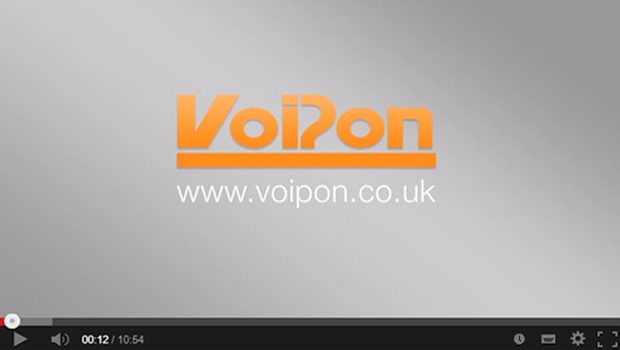Kathleen Reed of VoIPon catches up with Sangoma UK General Manager and Director of Product Management, Simon Horton
Sangoma reveal advantages of Sangoma Vega VoIP Gateways over rival products, the best uses of Sangoma Vega Media Gateways, plans for future Sangoma Vega Gateways plus how Sangoma has invested in Microsoft Lync.
You can Listen to the Sangoma Podcast and see the full transcript below:
VoIPon: Broadcasting from various countries around the world, using voice over IP technology, this is VoIP Uncovered – A VoIPon Solutions UK podcast. I am Kathleen Reed. We’re once again excited to have a representative from Sangoma; Simon Horton, the company’s new UK General Manager and Director of Product Management, joins us today to discuss what’s currently happening at Sangoma and with Sangoma Vega Gateways. The Sangoma Vega Gateways include the Sangoma Vega 50, Sangoma Vega 100, Sangoma Vega 200, Sangoma Vega 400 and Sangoma Vega 5000 Gateways ranges. As VoIPon listeners likely know, Sangoma is a leading provider of Asterisk hardware and software components that enable or enhance IP communication systems for both telecom and datacom applications. So Simon, what are the advantages of the Sangoma Vega Gateways over rival products such as Patton, AudioCodes, Mediatrix, and Dialogic?
Simon Horton, Sangoma: I think one of our main advantages is our ease of use. We have this skin over our configuration settings called Quick Config that allows most customers to be able to completely configure their gateway, using three screens. If you’ve been through those three screens, you can typically get 80% of installs done. What this doesn’t do – it doesn’t prevent customers from using all of the flexibility that we’ve had with Vega Gateways through the previous 10 years. All that good flexibility is all there and our expert users are still going to use that. That’s our first advantage.
I think the second one is we have resilience built-in on all models. From our digital gateways, we have fall back resilience (E1/T1 resilience). You can choose on how to loop calls, depending on whether various roots are available or not.
Thirdly, we’re very cost effective. All those features I’ve just mentioned are present in all of our gateways, but we still are a very competitive price point.
VoIPon: What are some of the best uses of Sangoma Vega Gateways?
Simon Horton, Sangoma: In terms of digital gateways (which I will start with) I think there are two main uses: SIP trunking and PSTN trunking. Taking SIP trunking first, really, what we’re doing here is migrating traditional Legacy TDM-based PBXs to use with SIP trunking… But what this means is without the whole replacement of existing infrastructure, you can take advantage of SIP trunking, so you don’t have to change any of your PBX infrastructure, the wired desks or all the desk telephones. None of your users need to re-train into the new telephony system, they can just carry on as they were. But of course, you can benefit from the cost of SIP trunking rental, the minute costs, and the flexibility to combine the existing telephony platform with UC, unified communications.
You can burst with SIP trunking. It can be used to burst the channels up and down. If you’re running an outbound campaign and you need more channels than normal, then you can do ask your SIP sip trunk provider for more channels and make your outbound campaign.
Secondly, PSTN trunking is where an IP PBX such as an open source Asterisk or FreeSWITCH or even a closed source 3CX or snom can be connected to existing PSTN connections. In that way, you can use the high reliability of PSTN or use the PSTN as a resilient or a least cost route option. Of course, the SIP trunking and the PSTN trunking, the uses I’ve just mentioned are not exclusive. They can be combined together and even be combined with resilient options, so you can choose how to route inbound calls to any of those trunking methods.
VoIPon: Okay, fantastic. Are there any future plans for more Sangoma Gateway Vega products?
Simon Horton, Sangoma: For sure. We’re working really hard right now on developing our next generation of gateways. Our roadmap includes new versions that will have different product entities. On the digital side, we’re working from fractional E1 right up to 8 trunks of E1, so 240 simultaneous calls. On the high density analog side, the Sangoma Vega 5000 Gateway, we are looking at 24 to 50 analogue ports with different technical capabilities to address two markets: One lower cost with fewer capabilities and a more feature-rich, more flexible model. Incidentally, we see really good traction on high-density gateways in emerging markets, where analog telephony is prevalent and very cost effective.
Instead of using IP phones, which are generally quite expensive, if you have any deployment in highly populated areas such as blocks of flats or universities or military establishments, often, putting a high-density analog gateway using analog phones in those locations can be a very cost effective way to go. Of course, with the gateway, you can connect the analog phones through and to your existing unified communications platform.
VoIPon: We understand that Sangoma has invested in Microsoft Lync. Can you please tell us more about this offering?
Simon Horton, Sangoma: Sure. The Sangoma NetBoarder Lync Express products, Sangoma NetBorder 1 T1/E1 + 4 FXS Lync Express LYNC-NBE-AP100, Sangoma NetBorder 2 T1/E1 + 4 FXS Lync Express (LYNC-NBE-AP02), Sangoma NetBorder 6 FXO + 2 FXS Lync Express LYNC-NBE-APAN and Sangoma NetBorder 4 BRI + 2 FXS Lync Express LYNC-NBE-APBR has been one of our hottest product releases we’ve had in quite a while, actually. The product is focused on implementation to link around 240 users. This can be for branched offices, greenfield implementations, or even in small offices that need telephony support when using a hosted Office 365 solution. What we’ve done today, which is unique in the marketplace is to offer the Lync server and the VoIP gateway in a single volume package. In a single volume, rack mount chassis you have the Lync server and the VoIP gateway, so it makes it very easy for businesses to deploy Lync on site.
VoIPon: Okay, makes sense. So what’s next for Sangoma?
Simon Horton, Sangoma: We’re continuing to pursue our “Everything Connects” strategy. There will be new products that will continue to make it easy to connect distant networks, systems applications and people. We’re improving our existing line of SS7 gateways. We’ve just talked about how we’re improving our Vega line gateways, and we would be bringing session border controllers to market, as well as video MCUs and WebRTC gateways.
I really want to thank you for your time today, Simon. Simon Horton is Sangoma’s UK General Manager and Director for Product Management. This has been a VoIPon, VoIP Uncovered podcast, brought to you by VoIPon Solutions. For more information, please visit www.voipon.co.uk.
You can also find out more information on the best uses of Sangoma Media Gateways by visiting our Sangoma Product Scenarios pages.
Share this story with your friends or work colleagues. If you want to stay up to date with our latest products, industry news and offers you can sign up to our monthly newsletters, keep up to date with us on Facebook or follow us on twitter @VoIPon.






